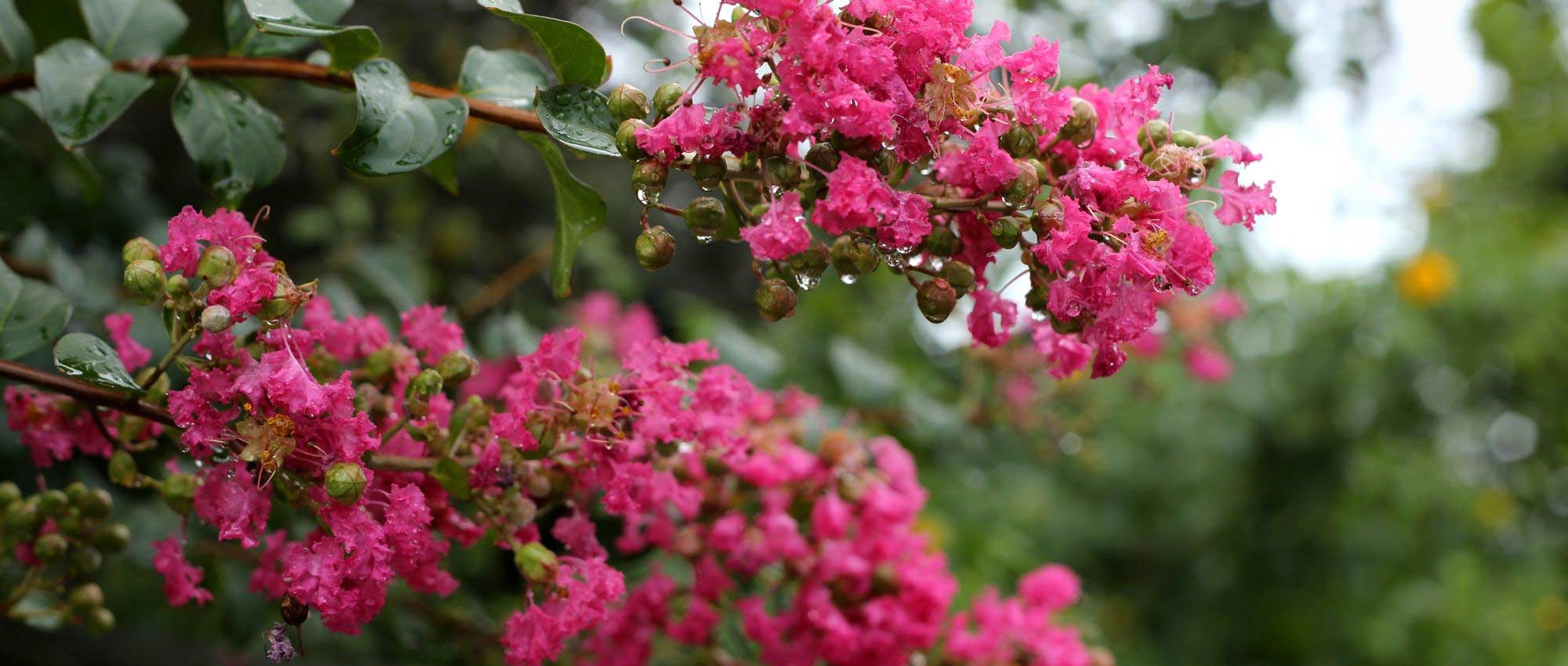
Crepe myrtle, Lagertstroemia : 6 ideas for successful pairings!
Discover how to integrate it into your garden
Contents
Lagerstroemia, or crape myrtle, is a beautiful tree or bush that offers a flowering in summer, often pink, red or white, in the form of generous panicles. Its leaves, deciduous, can be green or purple, even almost black, depending on varieties. They take superb orange colours in autumn before falling, revealing all beauty of its architecture and its smooth bark, beige or pinkish in colour. Lagerstroemia is thus decorative in every season! Discover our ideas for pairing it in the garden, with other perennials or bushes, and create a colourful, harmonious scene.
For an exotic ambience
Use Lagerstroemia to recreate, for example, an exotic atmosphere. Choose a variety with deep pink or red flowers, and plant alongside it palms (Trachycarpus, Chamaerops…) and hardy banana plants, such as Musa basjoo. Add decorative, architectural leaves, such as those of Phormium, Cordyline or Carex. As for flowering, make the most of Crocosmias, Eucomis, or Kniphofia. They will bring both colour and plenty of originality. Also discover the striking flowering of Hedychium gardnerianum, which bears upright clusters made up of irregular flowers resembling butterflies, in orangey-yellow. For a vivid, colourful effect, bougainvillea will also pair perfectly with the flowering of Lagerstroemia! If you live in an area with a mild climate, you can plant it in the ground and train it to climb against the wall of your house. Finally, with its large palmate, purple leaves, the castor oil plant (Ricinus communis) will also find its place in this type of garden.
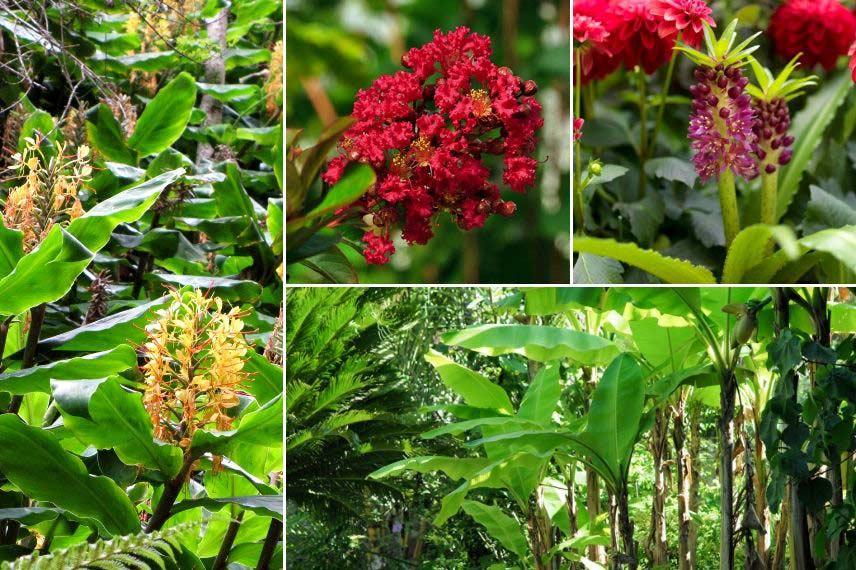
Lagerstroemia can easily be integrated into an exotic border. Hedychium gardnerianum (photo Forest and Kim Starr), Lagerstroemia indica ‘Rouge Nain’, Eucomis ‘Sparkling Burgundy’ (photo Steven Bemelman – iBulb), and Musa basjoo
For a romantic flower border
In a completely different style, Lagerstroemia can be integrated into a romantic border in soft tones. Choose a variety with soft pink or white flowers to combine with elegant flowering of roses. You can include alongside them gypsophilas and Gaura lindheimeri, which will charm with their airy, very light flowering. Also add touches of mauve-blue with lavenders and Perovskia, two easy and hardy plants that offer generous melliferous flower displays, attracting pollinating insects. You can also erect a pergola or trellis on which to train a clematis. For a very soft, romantic atmosphere, we also recommend using the silvery foliage of artemisia (for example Artemisia arborescens or Artemisia ‘Powis Castle’) or that of Stachys byzantina. Finally, Lagerstroemias also pair well with hydrangeas, which likewise produce beautiful inflorescences often in white, pink, mauve or bluish shades.
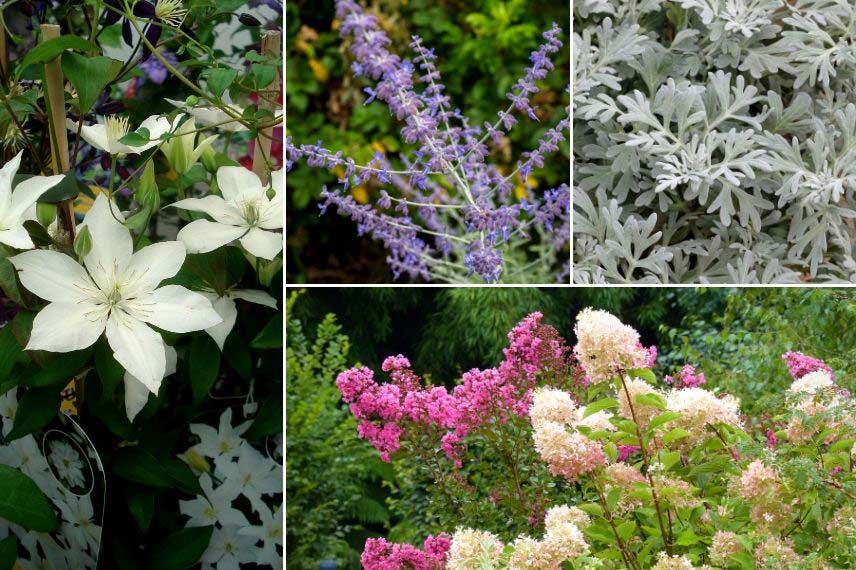
Clematis ‘Baby Star’, Perovskia atriplicifolia ‘Filagran’ (photo F. D. Richards), Artemisia stelleriana ‘Silver Brocade’, Lagerstroemia indica ‘Rose Indien’ and Hydrangea paniculata ‘Vanille Fraise’
Discover other Lagerstroemia - Crape Myrtle
View all →Available in 1 sizes
Available in 1 sizes
Available in 2 sizes
Available in 2 sizes
Available in 1 sizes
Available in 1 sizes
Available in 1 sizes
Available in 1 sizes
Available in 2 sizes
Available in 2 sizes
For a summer border bursting with colour!
For a very colourful border, you can combine Lagerstroemia with other summer-flowering plants, such as daylilies, achilleas or agapanthus. Place Lagerstroemia at back of border, and plant perennials in front of it. Echinacea purpurea offers large flower heads whose colour, often purplish, harmonises nicely with that of Lagerstroemias. Similarly, some varieties, like ‘Summer Breeze’, have beautiful yellow flowers that bring plenty of light to a border! Also enjoy dahlias, which offer flowers in a variety of colours. For lightness, you can include a few young plants of Verbena bonariensis in your border. Likewise, the carnation Dianthus carthusianorum also pairs very well with Lagerstroemia. Their colours harmonise wonderfully.
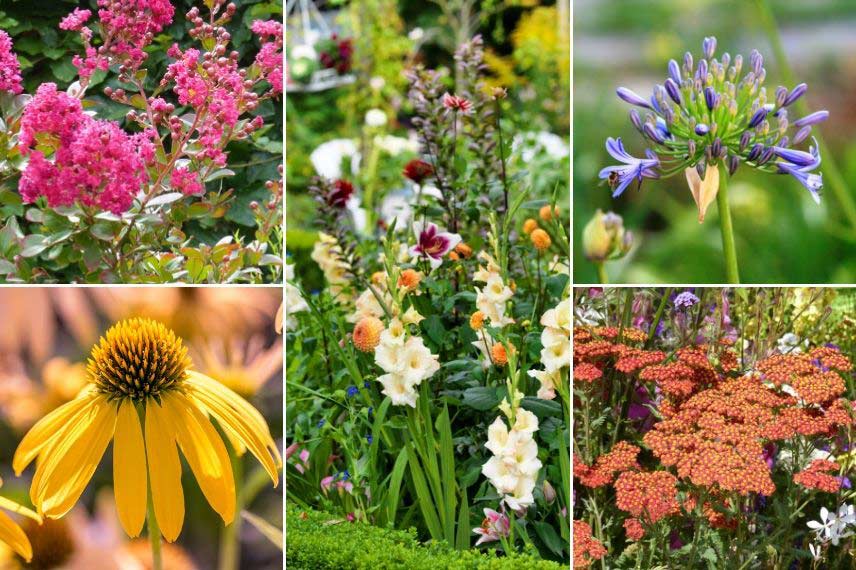
Lagerstroemia indica ‘Rose Indien’, Echinacea purpurea ‘Summer Breeze’, a combination with dahlias, gladioli and lilies (photo Steven Bemelman – iBulb), Agapanthus, Achillea ‘Walter Funcke’
With small groundcover perennials at its base
Dress the base of your Lagerstroemia with clumps of small perennials that will add colour! Choose, for example, Hardy geraniums, which offer a long flowering period, often blue or mauve. You can also opt for alchemillas, artemisias, corydalis (notably Corydalis lutea), or the decorative foliage of heucheras. A tapetum of periwinkle can also be very decorative at the base of a Lagerstroemia. Finally, for a subtle graphic effect, you can make use of the fine foliage of ophiopogons and small grasses (Carex, Festuca glauca, Stipa…). In addition to their decorative appeal, these mat-forming perennials will help keep soil cool at its base, while limiting weed growth.
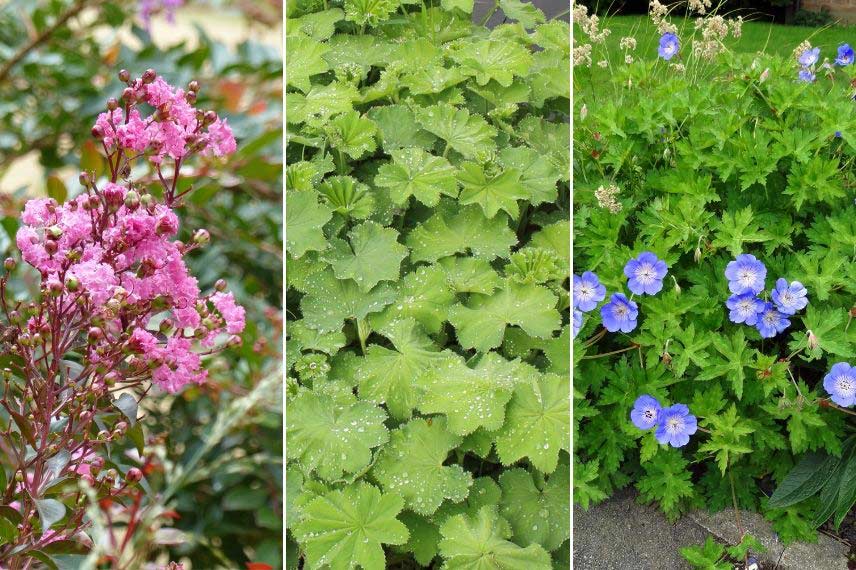
Lagerstroemia indica ‘Rosea’, Alchemilla mollis (photo Dominicus Johannes Bergsma), and Geranium ‘Rozanne’
With trees and bushes with decorative wood
Lagerstroemia is deciduous, and in winter the absence of leaves reveals an attractive decorative bark, ranging from grey to beige, with a very smooth appearance. It peels, with small flakes of bark detaching from the trunk. For an original winter scene, it is interesting to pair Lagerstroemia with other trees and bushes with decorative wood, such as dogwoods, notably Cornus sanguinea, or Cornus sericea ‘Baileyi’. Arbutus also offers very beautiful bark, ranging from grey to brown and reddish tones. You can also enjoy Acer davidii ‘Viper’ and Prunus serrula. Also discover the superb Acer palmatum ‘Sangokaku’, which has superb bright red twigs! Pair Lagerstroemia also with other trees with elegant architecture, for example Japanese maples, Cornus kousa or Paulownia…
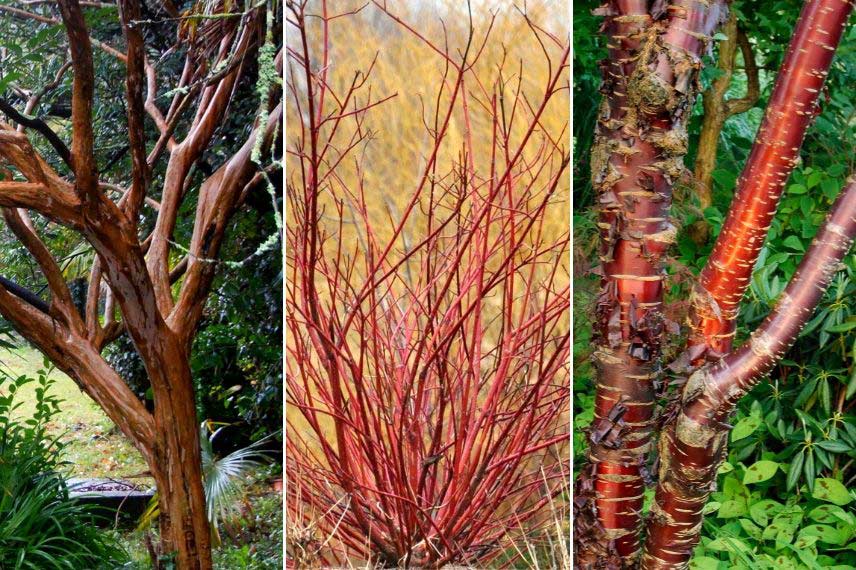
Lagerstroemia indica (photo Uliako Auzo Elkartea), Cornus sericea ‘Baileyi’, and Prunus serrula ‘Amber Scots’
To create a beautiful autumnal scene
Lagerstroemia foliage takes on beautiful orange hues in autumn, before falling and disappearing for winter, leaving the branches naked. You can pair it with other trees and bushes that display stunning autumn colours. For example, consider Cercidiphyllum japonicum, also called Caramel tree. Similarly, Sumac Rhus glabra offers superb foliage divided into leaflets, which takes on beautiful reddish hues in autumn. Not forgetting Nyssa sylvatica, a tree whose foliage turns orange in autumn. These trees and bushes will give a splendid blaze of colour at the end of the season! You can add ornamental fruit bushes, such as Callicarpa, Viburnum opulus or Nandina domestica. To bring more lightness and movement, don’t hesitate to include grasses, such as Miscanthus, Spodiopogon sibiricus, or Mulhenbergia capillaris… The latter offers a superb airy flowering, with very open spikes that turn a purplish-pink in autumn!
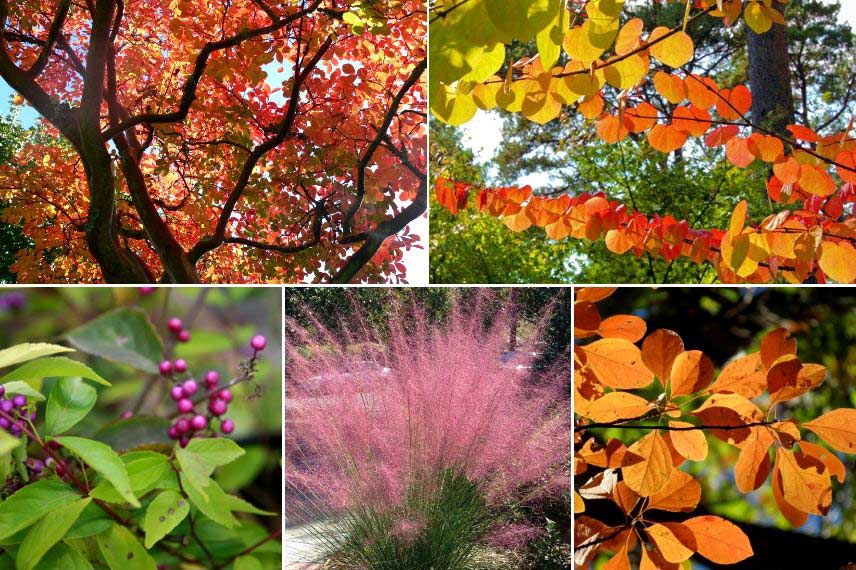
Lagerstroemia indica (photo m.dolores paderne), Cercidiphyllum japonicum, Callicarpa bodinieri ‘Profusion’, Muhlenbergia capillaris (photo S&P Yang), and Nyssa sylvatica (photo Katja Schulz)
- Subscribe!
- Contents
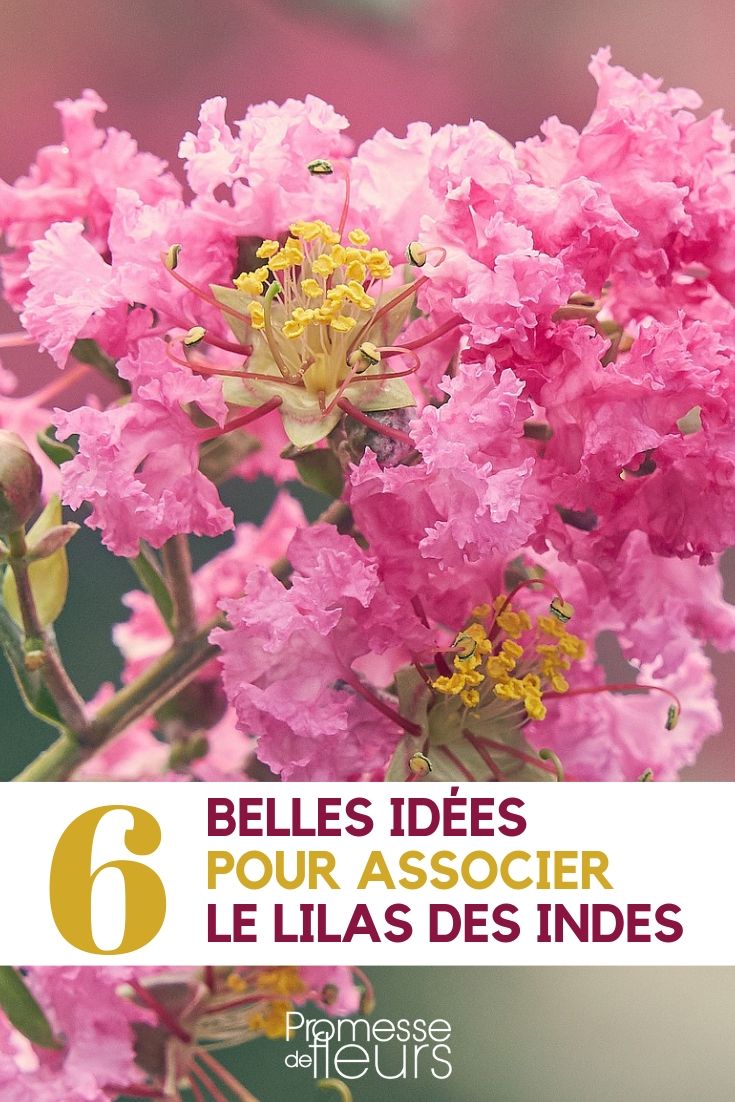































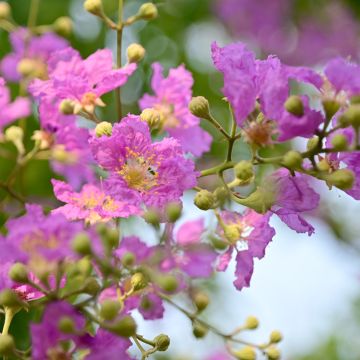
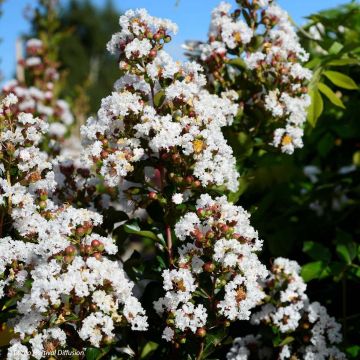
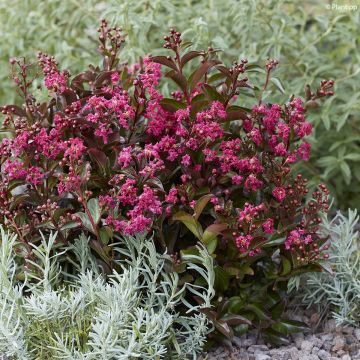
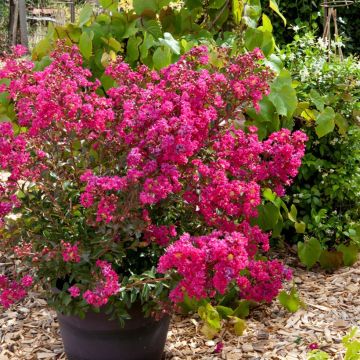
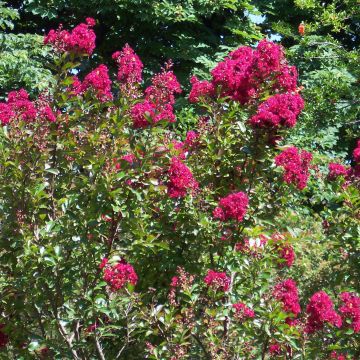
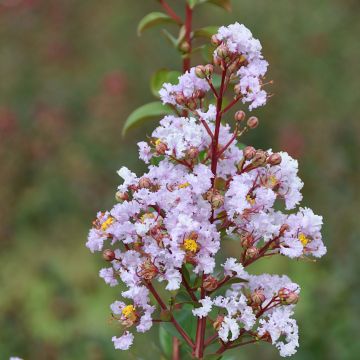
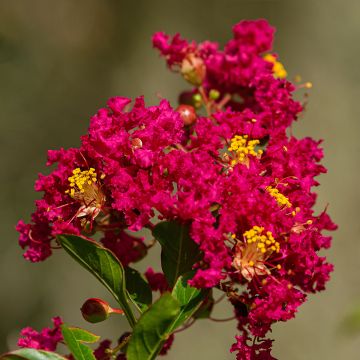
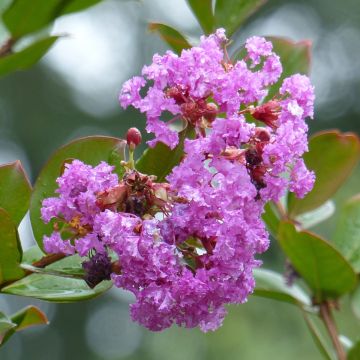
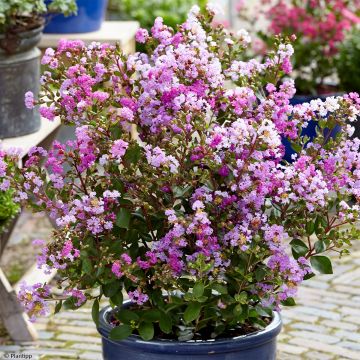
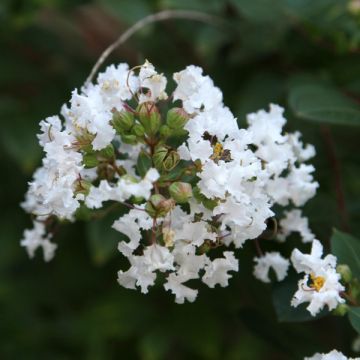
Comments